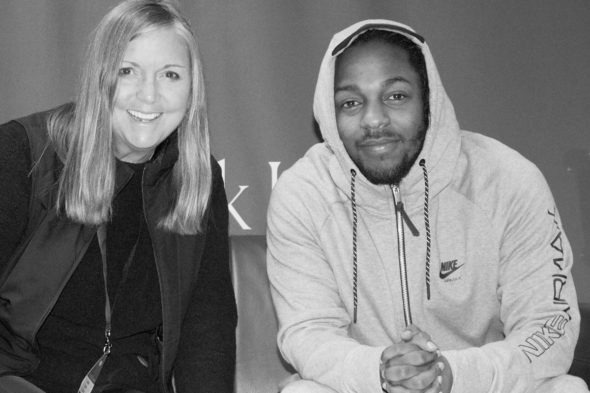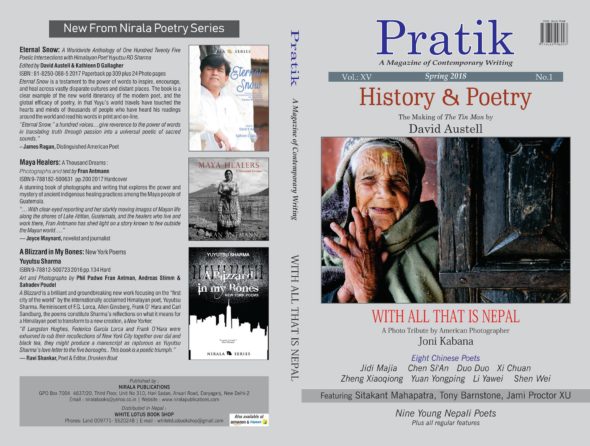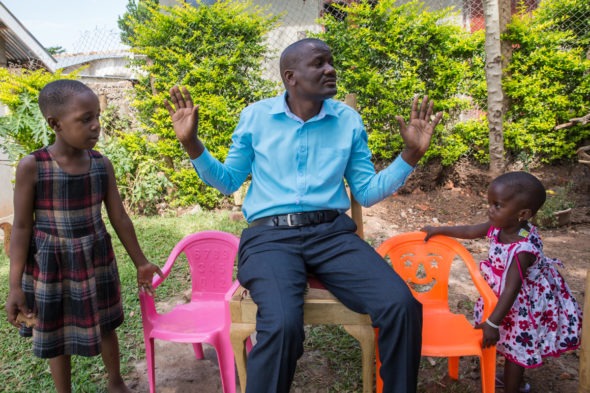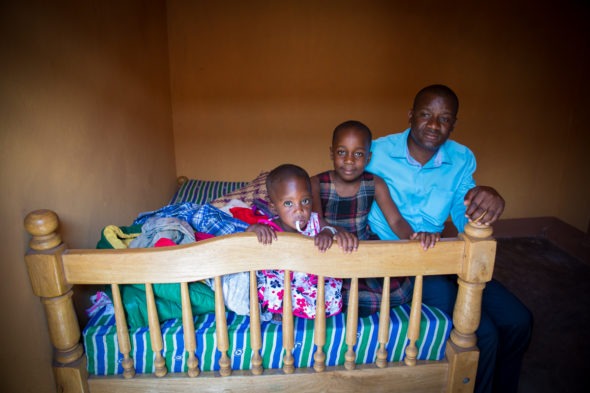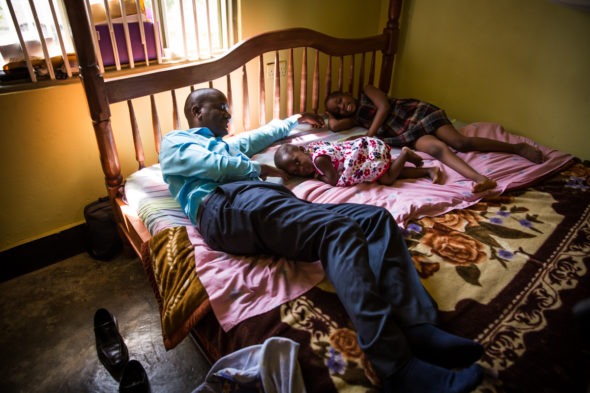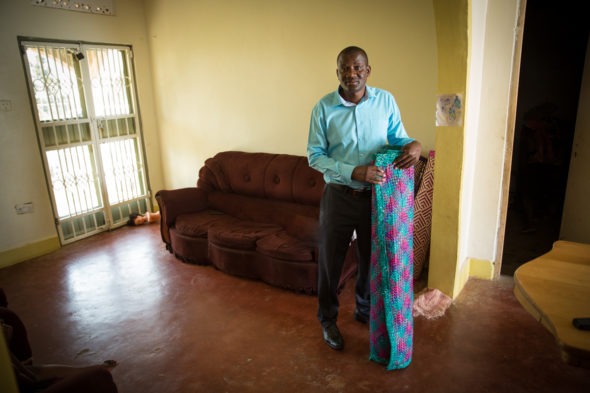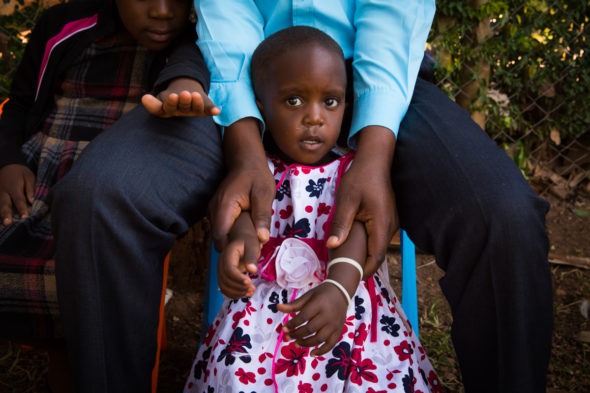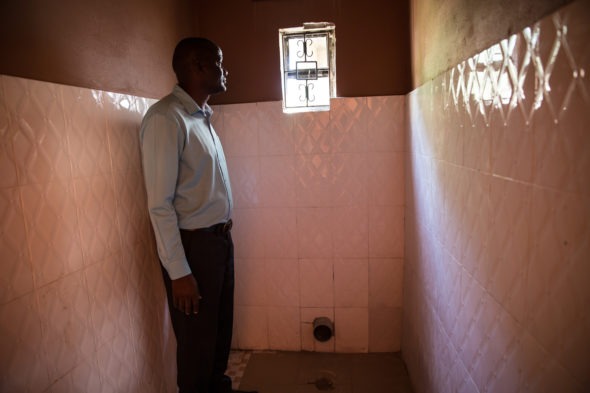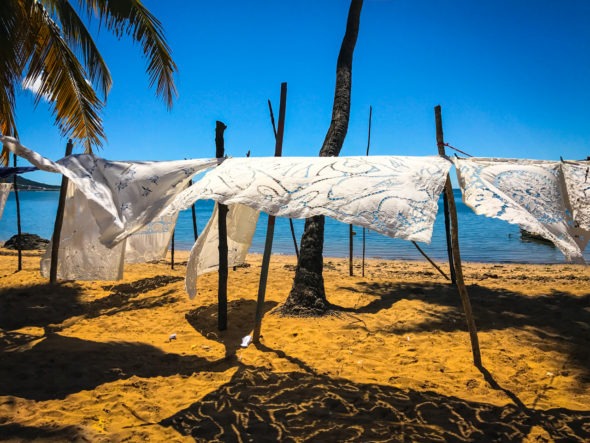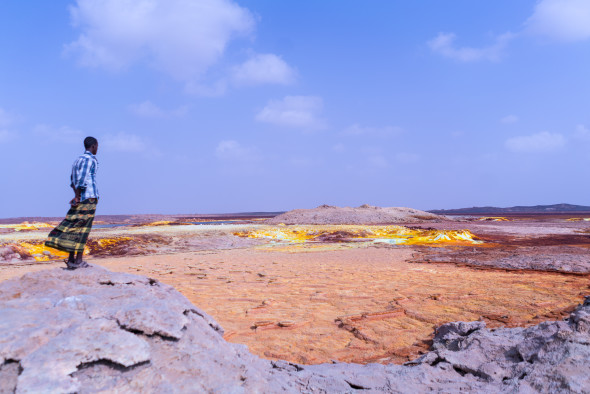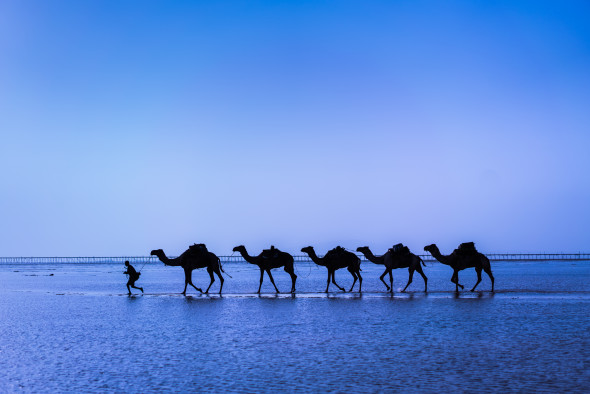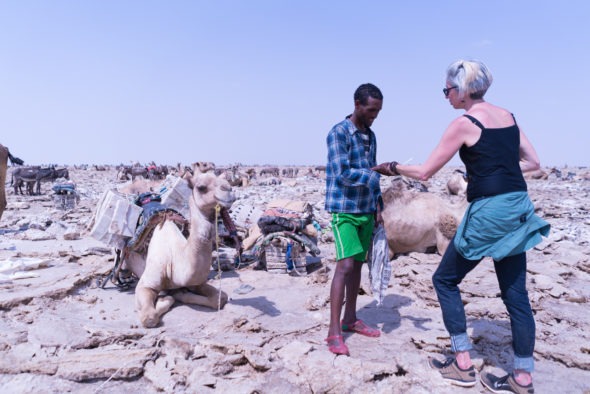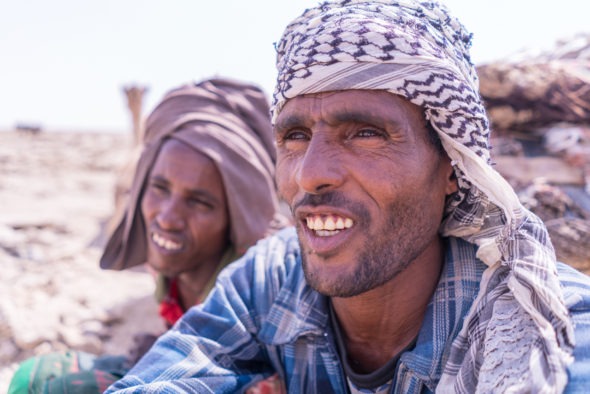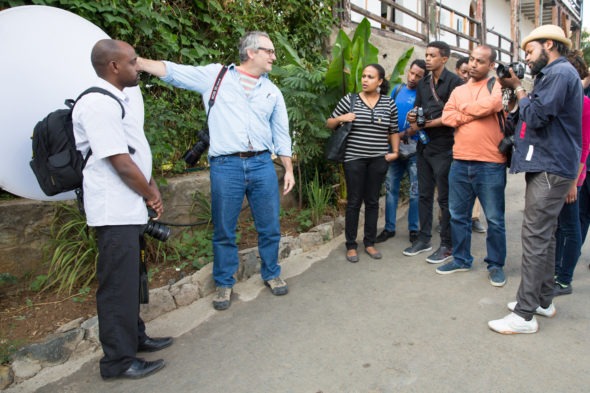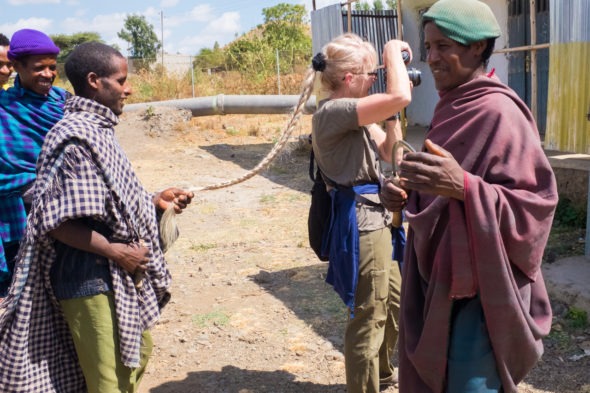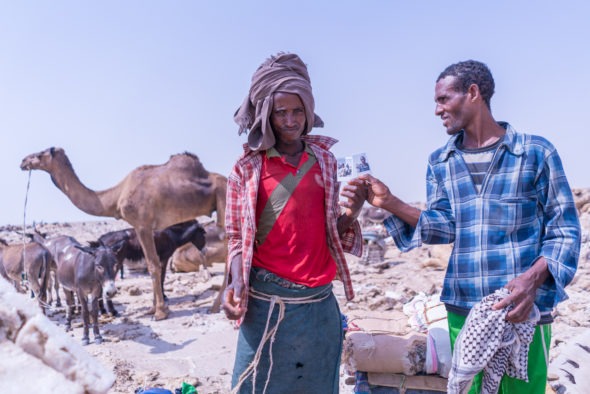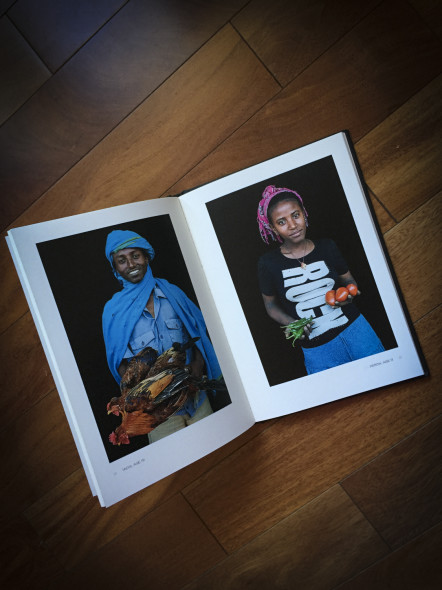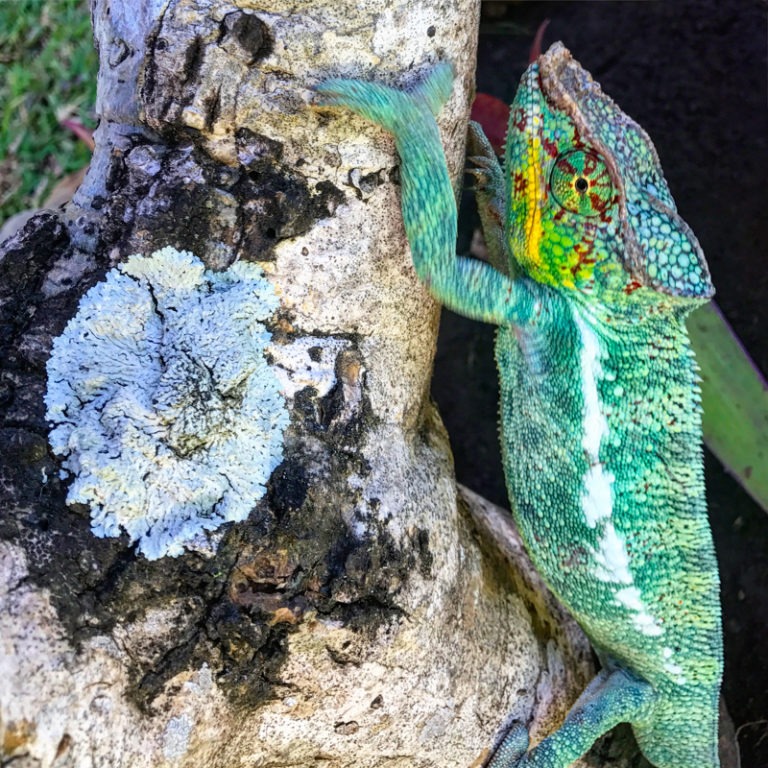The print will be shown at Jadite Galleries in Hell’s Kitchen with an opening reception on April 5, 2018.
Destination: Yelapa
I have been assigned to take over Instagram feeds for clients such as Travel Oregon and the Eastern Oregon Visitor’s Association, and also develop feeds for others. Here is a sample of one feed that I have developed: a lovely casita called Casa Pericos in the small village called Yelapa, just an hour’s boat ride away from Puerto Vallarta. There are no roads or vehicles on this stretch of beach town, which makes it all the more glorious to visit and photograph.
Pratik: With All That Is Nepal
Cascadia 2018: The Homesteader
What is even more exciting to me is that two other artists (Kristin Renzema and Nancy Smithman) who made images in this area during one of our workshops also were selected to exhibit their images.
Submission statement:
The goal of the exhibit is to interpret the authentic Oregon experience, and to challenge artists to look at the urban/rural divide through their lenses and show us stories about our similarities, rather than our differences. We chose the word “Cascadia” as a reference to the Cascadia Subduction Zone (or fault), which stretches the entire length of the Oregon Coast, as well as further north and south. It is this fault line that is the source of much of the volcanic activity that created the Oregon Landscape and the Cascades, which have traditionally been the dividing line of our state. In fact, it is a very long, sloping subduction zone that separates the Explorer, Juan de Fuca and Gorda Plates from the North American Plate — the Cascadia subduction zone is where the two plates meet, and it is at “Cascadia” where Oregon meets.
And So It Goes
He makes nervous gestures to ensure that we feel welcome and comfortable, arranging chairs into a circle under a tree that tempers the blazing Ugandan sun. He brings out a tray of tea and fresh grilled corn cut from the stalks that his wife tended. His wife, she who “flew away” recently despite the many expert hands that tried to save her from the devastating clutches of postpartum hemorrhaging. He watched her fade away, this woman he so loved and with whom he created his family of four precious little girls.
Postpartum hemorrhaging (PPH) is the leading cause of maternal deaths globally. Each day, approximately 800 women die from PPH, a staggering statistic given the very simple remedy that could save these women. And so it goes that we live in a world that fails the most vulnerable, a woman giving birth to a new life.
There are many reasons why a mother dies from PPH: lack of skilled medical staff, inability of a woman to reach a hospital or for her family to pay for services, expired drugs, lack of syringes, poor education, and timing when she reaches care. Any or a combination of these scenarios can lead to death, swiftly and with little warning. Every day, women perish, avoidably, leaving behind a chaotic set of issues for her children, her family and the community spanning years of affect. And more often than not, she leaves a man in despair, his tears flowing at any mention or reminder of this woman he chose as his life partner.
Her memory lives on in this house of papa and his girls. He has kept her things (shoes, dresses, hair ribbons) in open baskets and keeps referring to “mama’s chickens, mama’s corn”.
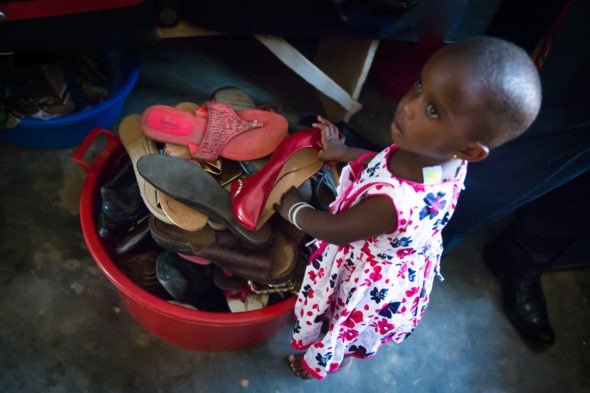
The eldest daughter shows us “mama’s bed”, where she and her younger sister now sleep so they are comforted by the remnants of her spirit by night. The twins she recently bore are in a loving care center until papa can get more organized and find his wise perspective on his newly shattered life. He visits them several times a week, cherishing her last gift to him.
He is proud of his home, and leads us inside so we can see the rugs she wove and the pink bathroom he made for her out of their old chicken coop to enable her comfort while she nursed twin girls. As he shows us each room, his girls are right by his side, feeling his love as he strokes their hair and wipes their noses and looks at them with assured intention of how he will be there for them the rest of his life.
Many African men often get mischaracterized by those who commit transgressions against women, marginalizing the men who express devotion to their wives and children. This man epitomizes love in its most tender form: being willing to care for his “band of girls”, ensuring their clothes are clean, playing with them, holding them when they ask for mama.
There are many organizations that grieve these concerns and are working as fast as they can to eradicate these issues. Working tirelessly, they study challenges, assist with lack of resources, and work with the World Health Organization to build awareness and responses to the far reaching and devastating effects of PPH. And so it goes that we live in a world that is capable of rallying around the most vulnerable.
No mother should face death from obstetrical concerns. No young girl should fear for her life as she gives life. And no husband deserves this kind of heartbreak.
At the end of our visit, this profoundly affected man shakes our hand and says goodbye with a strained voice. Emotions run deep within him and frequently surface, and as they do, he reaches down to stroke his daughters’ heads in silence while each little girl raises her tiny hand to find his. Together they stand, facing us with hearts open wide. And a hope for better maternal healthcare for all.
Patterns + Shadows: First Prize!
The print will be shown at Jadite Galleries in Hell’s Kitchen with an opening reception on April 5, 2018.
Darkroom Gallery: Multiples Exhibit
These women each had been treated for fistula and were living in Hamlin’s rehabilitation center, Desta Mender, where they learned new skills such as reading, writing and math after their surgeries were completed.
Many women are ostracized by their villages when they develop a fistula, and often they must find new ways of supporting themselves. Undaunted by their struggles, they form a bond while residing at the hospital and help each other heal emotionally. New confidence is found, and together they help each other find new paths to walk, unbridled by the injury they suffered.
Fistulas can develop many ways, but most often it occurs due to obstructed labor. Dr. Catherine Hamlin saw the great need for prevention efforts and developed a midwifery college where young village girls are trained in midwifery and other maternal health care actions in Addis Ababa after which they return to their villages to provide much needed care in their remote home areas.
It has been an honor to stand in front of these brave women, the fistula survivors and the new midwives, and realize how devoted they are to their own healing and to the healing of others.
Prints For Prints: Afar, Ethiopia
For us, it was an epiphany to stumble upon this unbelievable and yet relatively undiscovered corner of the world. Everything was unexpected: the place, it’s unique geology and landscape, the people and their unique way of life. One highlight was our encounter with a mile-long camel caravan led by salt miners on their way to harvest salt from the vast salt pan we found ourselves driving across. I imagined these men traversing the same well-worn paths traveled historically for countless centuries dating back to the pharaohs.
While visiting this area, and as an excuse for making a personal connection, we stopped to take a few instant print photos of the men as they passed by, gifting them the print in exchange for a moment of interaction. Their excitement and appreciation reinforced enthusiasm for one of my personal projects, Prints For Prints.
In 2013, I founded Prints For Prints, a volunteer organization which brings photographers and equipment to remote corners of the world to set up portable photo studios. A family photograph is a precious thing to many of us, and especially so to people who live in remote areas. Often in areas so far away, many do not have a record of their children, their elders or even themselves. We feel strongly that a photographic print is a wonderful way for loved ones to remember each other, whether they have passed from this life or are thousands of miles away carrying salt to Somalia. Our purpose is to create a physical keepsake that documents and preserves a moment in time to be shared, remembered and passed to future generations.
As we’ve learned time and again in our journeys, contained within the portrait process is an opportunity to make a personal connection. In the course of capturing a picture, we shared an intimate moment exchanging glimpses into each other’s hearts and inner psyches. Warmth, humor, vulnerability, and sorrow all expressed in an instant.
This aspect was reinforced again during our brief time in the Danakil. It was a bit intimidating when we approached the salt miners in their caravan; they seemed rather intense and brooding. Even after overcoming the language barrier and agreeing to have their pictures taken, they still each gave a purposeful grimace when they stood for their portraits. It only struck us after a few moments that it was partly swagger as we watched each person being cajoled by his traveling mate as they each shared their small mementos with each other. This gesture opened the gates of wishes, and we were asked by many others to make more prints.
In every venture of Prints For Prints, we consistently find ourselves drawing a crowd. Many times we find ourselves surrounded by burgeoning local photographers seeking to advance their skills. We make the most of these opportunities by making space in our process providing educational mentoring, either one-on-one with individuals or through partnerships with local schools, and we include students in our field photographs. We hope this opportunity to pass on our photographic expertise to a local community will sow the seeds for a developing photographic industry, as the passion for the craft is very apparent.
While experiencing this remote region and its natural beauty and seeing the salt miners’ joy upon receiving their instant print, we realized that there is a larger potential for storytelling here. Up until now, Prints For Prints’ primary focus has been connecting photographers to their subjects and leaving behind high-quality prints and the intellectual tools and inspiration for a continued photographic industry.
But there is more substantial potential as a vehicle for authentic exploration and storytelling of the area and bringing these stories to a larger audience. In a world struggling with a rise in polarization and nationalism, there is a need for a greater inclusiveness that celebrates our diversity and perhaps redefines our preconceptions of “others.” Making an intimate human connection in the same way a photographer connects to their subject in the process of making a portrait is a way to cross cultural divides.
We envision the Prints For Prints expedition as a vehicle for an authentic exploration of a locale by getting to know its people on a more intimate level while finding and documenting the anecdotes and rich stories that inform their life experiences along with those “1000 words” imbued in their portrait. Creating cohesive documentation in beautiful images, stories, and video can then be re-purposed in a variety of platforms: print, publications and social media to bring awareness, tourism, and commerce to the area.
Photographing each subject against a portable backdrop, we intend to create portraits as they hold artifacts they bring with them on their nomadic journey.
We are seeking support via project sponsorship or monetary coverage/discounts of expenses. In exchange, we will be promoting the experience and story, in traditional publications and social media platforms. The resulting photographic assets, videos and written stories will be available for sponsors to use for their marketing and promotions, as applicable.
Through our work with organizations such as Travel Oregon, we have repeatedly seen how this process results in success in reaching a targeted, diverse audience. Travel Oregon depends heavily on image based promotions to draw in tourism from around the state and region each year.
For further information about our experiences with Prints For Prints, please visit our website at www.printsforprints.com. We welcome any questions regarding our process, past experiences and budgets for upcoming project work.
Should funding or service donations be secured, our next proposed trip will be to return to the Danakil Depression in Ethiopia in February of 2018 to give those salt workers the photo prints they asked for, as well as some much desired sunglasses that have been collected by people living in a small assisted living home in Coos Bay, Oregon.
(Seaside Stichers, photo by Mary Luther, Activities Coordinator)
If you would like to donate in-kind goods, airline miles, accommodations, transportation, translation services or financial support, please contact us by sending us an email or donating directly on our Prints For Prints donation page.
We appreciate any level of support!
You can see more images from this location in the Afar region of Ethiopia in my stock image database here. This project will also extend my earlier Market Workers project, celebrating those behind the developing world culinary scenes who bring spice and other delectable tastes into our lives.
Thank you for considering any level of involvement and support!
A Return To Madagascar
Frisky lemurs, gigantic spiders, kaleidoscope iguanas and luxurious beaches…this island has so much to offer! And thousands of animals, plants and other living things are endemic to this island since it was isolated from the rest of the world when it split from India 88 million years ago.
Check out my Photoshelter Madagascar archive or my Instagram account to see images from this trip.




